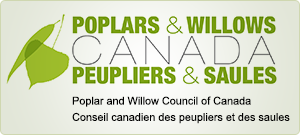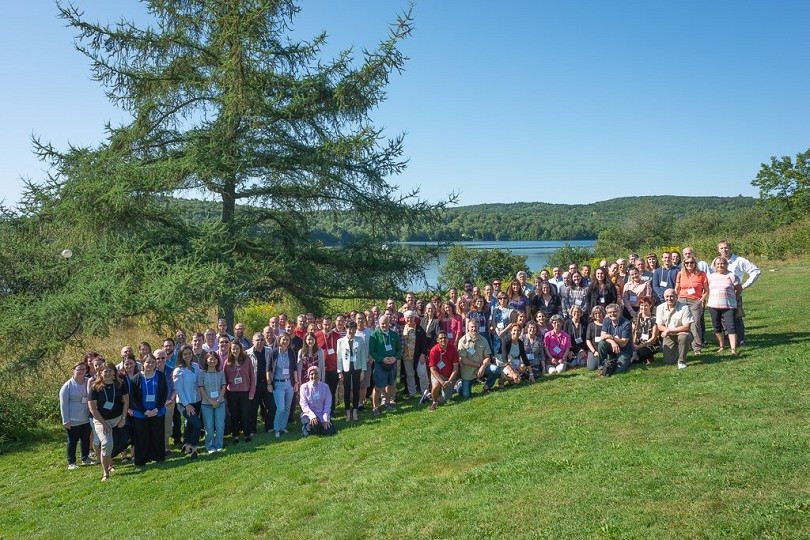 |
'Where do we want to be in 2049?' As it pertains to applied forest genetics, that was the question addressed by the 2019 conference of the Canadian Forest Genetics Association (CFGA). Some 125 participants gathered in the serenely beautiful natural setting of the Manoir du Lac Delage just outside the city of Québec to share their scientific information and thoughts. The program was very well organized by a local organizing committee co-chaired by Nathalie Isabel and Patrick Lenz of the Canadian Forest Service, who worked as a very effective 'tag team' throughout the four days of the conference (August 19-22). There were a number of innovative ideas including, most appropriately given the theme, a strong student component among the participants as presenters and session moderators. GE³LS research focusing on the ethical, environmental, economic, legal and social aspects of genomics featured in many presentations. In total, 44 oral presentations and 23 poster presentations were given and there was a strong level of discussion and exchange throughout the event, aided by the location, the fine food and other refreshments, and the absence of parallel sessions.
The Poplar and Willow Council of Canada/Conseil canadien des peupliers et des saules held its annual meeting in conjunction with the CFGA Conference. Reports for the past year from the Chair, Technical Director, Executive Assistant and the Pesticide Working Group, were received and adopted and the financial report and 2019-20 budget from the Treasurer were accepted. Present Board members were approved to continue in office for the coming year. A decision was made to pursue a proposal to hold the annual meeting in 2020 in the context of a workshop in the Interior of British Columbia featuring research and field sites on Septoria on poplars in that area. An alternative would be to meet in Central Alberta to visit the extensive willow plantations of Sylvis in the Airdrie area. PWCC members, though few in number, participated actively in the program of the CFGA conference, including as poster presenters and session moderators - and conference co-chair Nathalie Isabel is a Director at large of the PWCC.
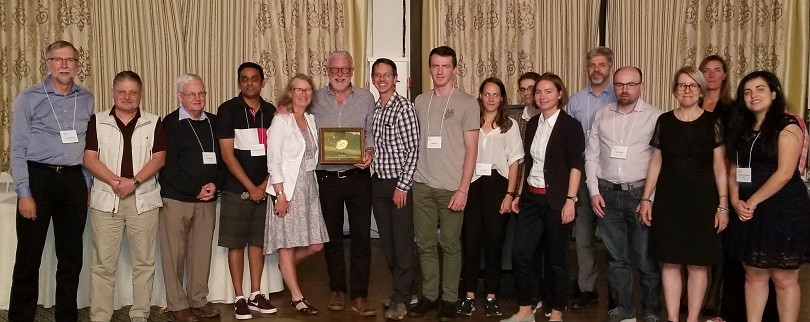 |
At the conference banquet, the Gold Poplar Leaf Award of the Council was presented to Pierre Périnet in recognition of his contributions to the PWCC over many years as a member, meeting and field-tour organizer and host, and latterly as Chair of the Genetics and Breeding Working Group, as well as his leadership of the hybrid poplar program of the Ministère des Forêts, de la Faune et des Parcs du Québec. Pierre recently retired from that Ministry and the Council wished him well in his retirement, trusting that he would maintain contact with member colleagues.
On the final day of the conference week, a field tour was offered to the Grandes-Piles Forest Nursery and experimental plantations of the Ministère des Forêts, de la Faune et des Parcs. The nursery is primarily devoted to growing coniferous seedlings in containers (Photo 1 below), producing up to 4 million large-size seedlings each year. The seedlings are raised in plastic 'tunnels' which are removed during the winter months so the seedlings are over-wintered under natural (or sometimes augmented) snow cover. Hybrid poplar planting material is grown from cuttings (Photo 2 below), reaching 1.5 m in height in one growing season (Photo 3 below) then stored over winter for spring planting as bare-root stock. A series of experimental plantations were also visited: a jack pine second-generation seed orchard, black spruce clonal tests from cuttings established in 2004 and 2005, white spruce clonal tests established from somatic embryogenesis from 2007 to 2016, a Norway spruce full-sib family test established in 2000, and hybrid poplar (Populus maximowiczii and Populus trichocarpa) progeny tests established in 2015 (Photo 4 below).
'Applied forest genetics: where will we be in 2049?' Student representatives at the conference had the last word. They concluded that we will need to work to improve knowledge transfer, including with open-source data bases. Hybrid students will be needed, studying both natural sciences (forest genomics) and social sciences (GE³LS) and taking science communications courses. All parties should be involved across the board: policy makers transcending borders, consultation with First Nations, and the vital support of industry for deployment of research outcomes. The future world of applied forest genetics seems to be in good hands.
PHOTOS TAKEN DURING FIELD TOUR (Photos courtesy Richard Krygier)
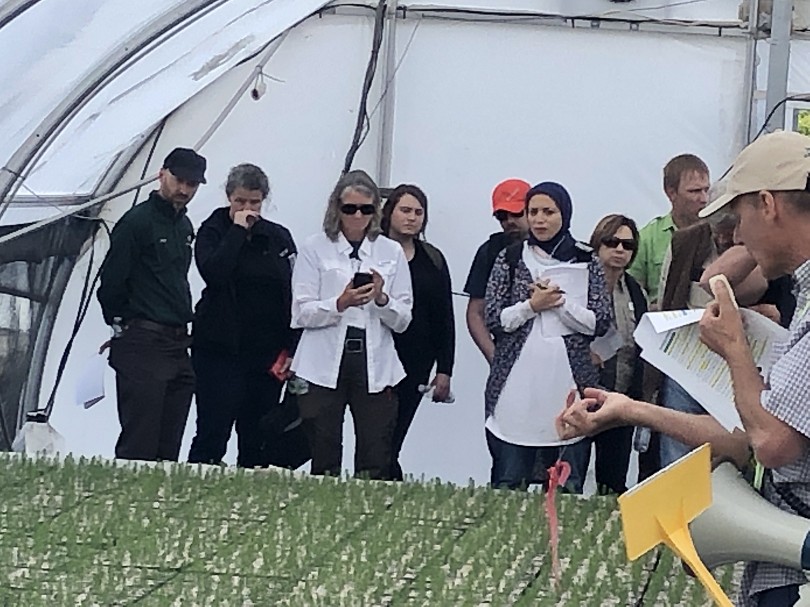
|
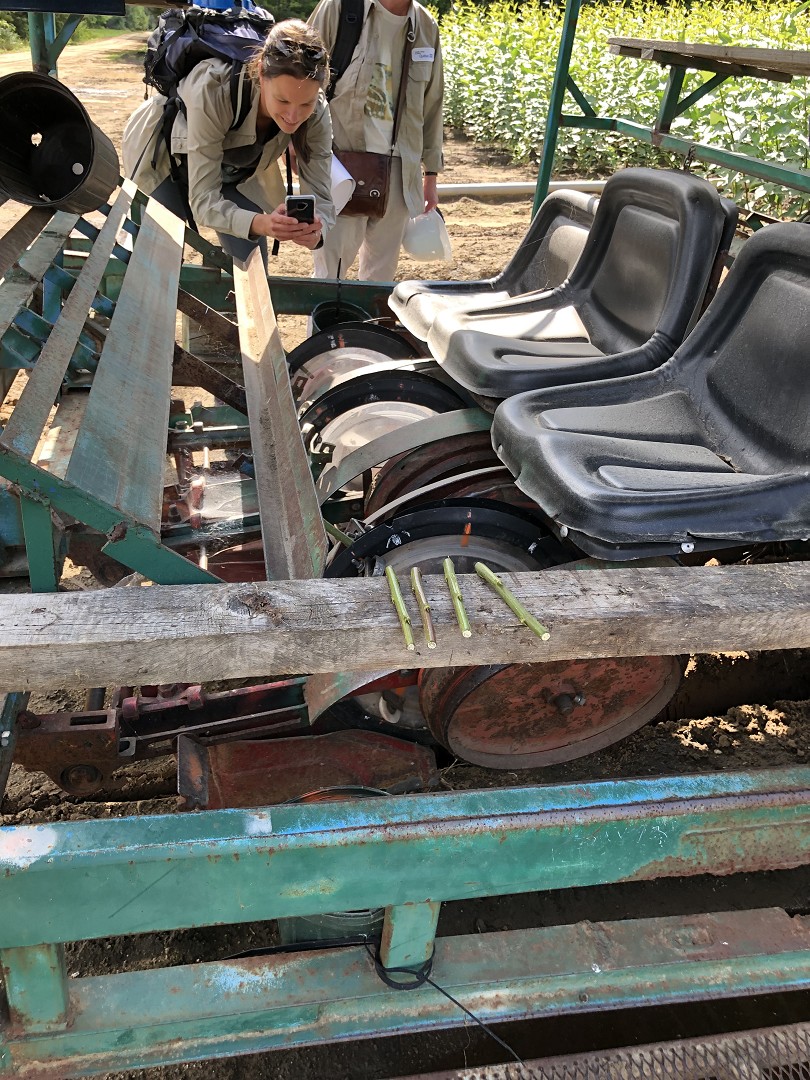
|
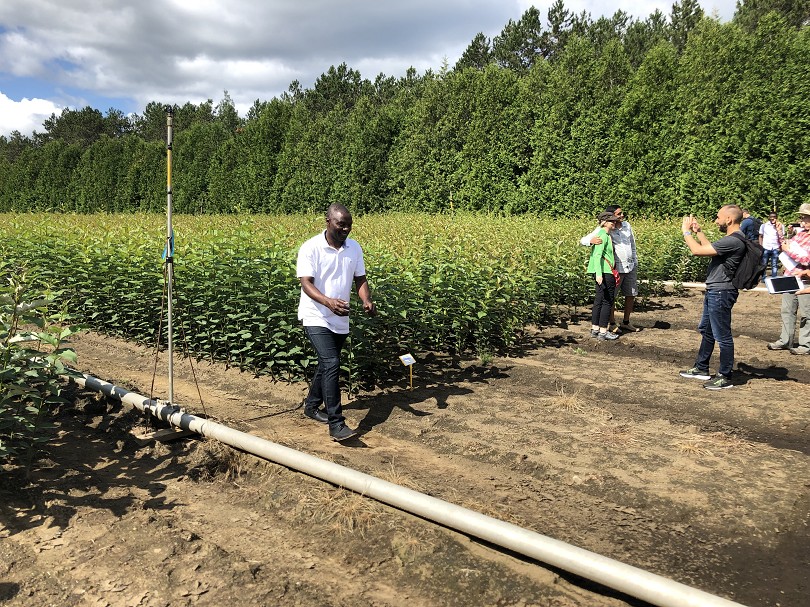
|
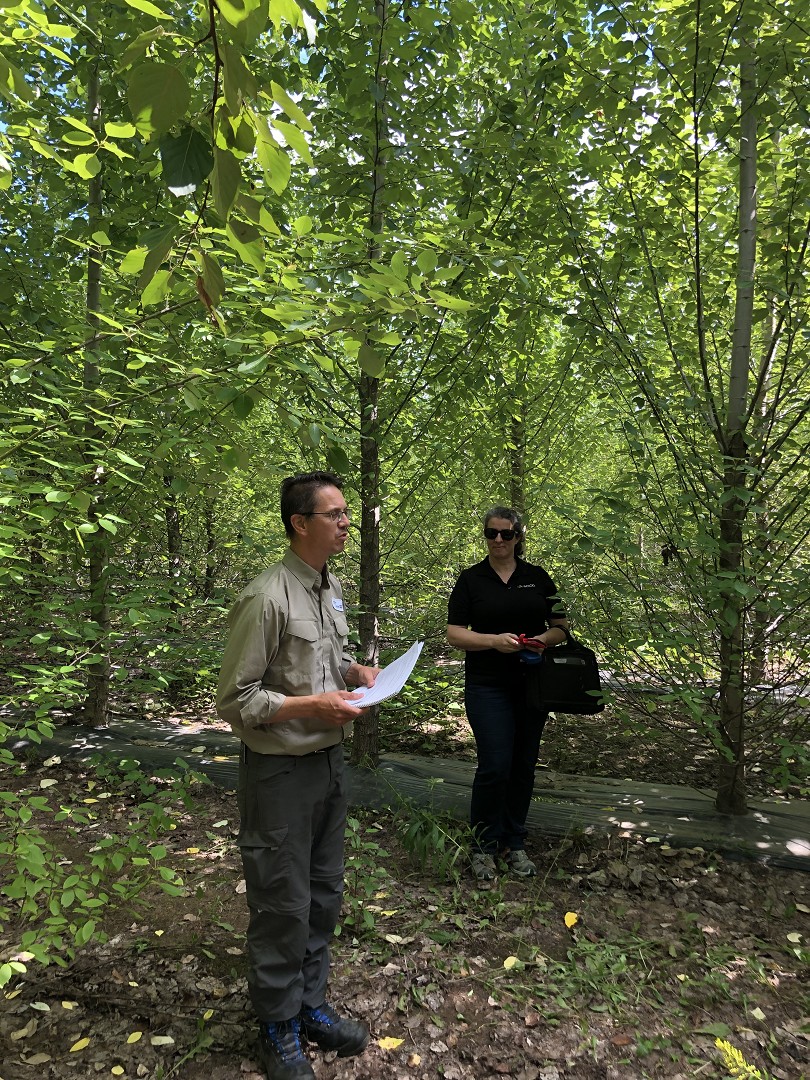
|
